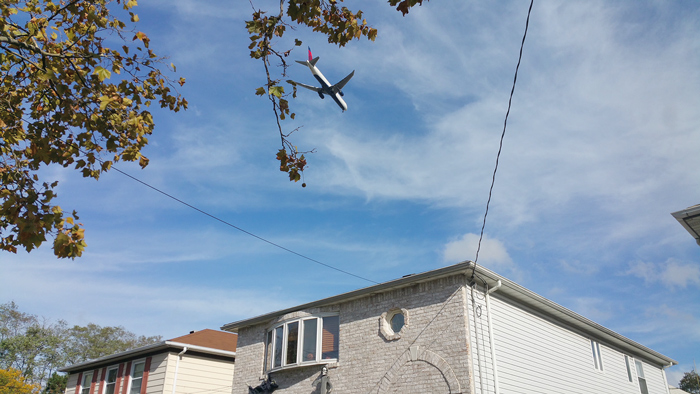Forum Photo by Michael V. Cusenza
“It is unacceptable that excessive noise continues to affect quality of life in our communities…We deserve relief!” said Rep. Meng.
By Michael V. Cusenza
A recently proposed law would require the Federal Aviation Administration to lower the standard at which the agency determines acceptable noise levels in residential areas, the bill’s sponsor, U.S. Rep. Grace Meng (D-Flushing), announced Friday.
According to the congresswoman, the measure aims to lower the Day-Night Average Sound Level to 60 from 65, and develop a plan to bring it down to 55 within 10 years. The 65 DNL metric has been in place since the 1970s when air traffic volume was much lower than it is today. The outdated metric no longer meets the needs of communities because it does not accurately reflect the daily reality of noise pollution, Meng posited.
Lowering the U.S. noise standard would mitigate the excessive airplane noise that continues to plague Queens and other communities throughout the nation, she added. It would allow more residents to qualify for federal sound insulation programs and reduce noise pollution in their homes. Europe’s acceptable noise-exposure levels from aircraft are a full 10 decibels lower than the U.S. standard.
Meng’s legislation would also require the FAA to inform communities of alternative methods of measuring aircraft noise once its study to do so is complete. Under a provision Meng helped to pass into law, the agency is working to evaluate additional metrics to the DNL.
“Queens residents need relief from the blistering sounds of airplane noise over our borough, and lowering the DNL would help combat the problem,” Meng, a founding member and former co-chairwoman of the Congressional Quiet Skies Caucus, added. “It is unacceptable that excessive noise continues to affect quality of life in our communities. I urge all of my colleagues to support this legislation so that we can alleviate the impact that aircraft noise has on my constituents, and those impacted in other parts of the country. We deserve relief!”
Aircraft noise can pose remarkably serious health threats—including cardiovascular disease—to the communities over which planes fly, and the health costs associated with said noise from changing flight patterns over populated urban landscapes far outweigh the benefits of reduced flight times, according to an August 2018 case study conducted at Columbia University and Queens Quiet Skies.
Scientists concluded that, “Despite increases in efficiency, flight automation systems without a careful assessment of noise might generate flight paths over densely populated areas and cause serious health conditions for the overflown communities.”
In October 2018, key provisions to address excessive aircraft noise concerns were included in the FAA Reauthorization Bill. The law included U.S. Sen. Kirsten Gillibrand’s (D-N.Y.) provision to require the FAA to designate a regional ombudsman in each FAA region to serve as a point of contact with the public, including community groups, to address noise, pollution, and safety issues. It also featured a provision pushed by Gillibrand and Meng to require the FAA to finalize its study into alternatives to the 65 DNL metric for measuring the impact of aircraft noise to people on the ground.

